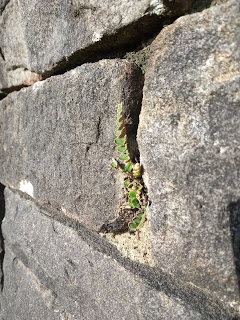 |
| Alchemilla xanthochlora |
 |
| Daboecia cantabrica |
 |
| Dactylorhiza praetermissa |
 |
| Salix caprea |
Botanical Society of Britain & Ireland (BSBI)
 |
| Alchemilla xanthochlora |
 |
| Daboecia cantabrica |
 |
| Dactylorhiza praetermissa |
 |
| Salix caprea |
Thunderbridge Meadows, Huddersfield
Friday 29th April
Leaders: Louise Hill & Kay McDowell
 |
| Bitter Vetch, Thunderbridge 29-04-2022 |
 |
| Athyrium filix femina |
 |
| Common spotted orchid |
 |
| Asplenium adiantum nigum & A trichomanes |
 |
| Athyrium filix femina 'Cristatum' |
 |
| Asplenium ceterach |
Old Finningley and Brooks Wood, Hurst
Plantation
28th April 2021
Leaders : John Scott and Kay McDowell
After lunch we drove a couple of miles to Hurst Plantation and an area called Brooks Wood which is a mixed plantation woodland on sandy soil. In the next field we noticed a farmer chain harrowing, throwing up large clouds of dust, which reminded us of the last few months of very dry weather. Hurst Plantation is a former sand quarry which has been allowed to regenerate naturally and includes some areas of open water. Amongst the woodland we recorded sanicle (Sanicula europaea) with its attractive palmately-lobed leaves, a first record for this tetrad, and hard-fern (Blechnum spicant), a rare sight in this part of South Yorkshire. Further round we recorded yellow pimpernel (Lysimachia nemorum), slender trefoil (Trifolium micranthum) and heath wood-rush (Luzula multiflorum) not quite in flower yet. In another wet area under willow scrub we saw sharp-flowered rush (Juncus acutiflorus) and pill sedge (Carex pilulifera).
Photo credits : little mouse-ear photo by Jesse Tregale all others by Kay Woodward
Wednesday, 8th Sptember 2021. Wessenden Moor / Featherbed Moss
Leader : Kay McDowell
We met on a warm, sunny day approx 26
degrees C with a light breeze, “not unlike Tenerife” exclaimed Mike. The
weather was unusual as the car park is approximately 490 feet (150m) above sea
level and quite often shrouded in mist and drizzle. Our aim was to concentrate
on the recovering moors after drain blocking and cessation of grazing, in
particular to look at ferns and willow scrub. This involved walking along the
old Pennine Way and wandering off the path to look at interesting plants and
potentially interesting areas.
We didn’t have to walk far as just near the car park were six fir clubmoss (Hupherzia selago) growing in a peaty bare patch with some bog asphodel (Narthecium ossifragum) growing nearby. The bog asphodel is a new record for tetrad SE 0506.
We examined the pale scales of narrow
buckler-fern (Dryopteris carthusiana) and compared them with broad
buckler-fern (Dryopteris dilitata) nearby. Mike showed us a feature of
narrow buckler-fern, if you uncover the crown with your fingers digging down it
is green in colour unlike broad buckler-fern which is brown.
We also recorded golden-scaled male-fern (Dryopteris
affinis ssp. borreri) and looked at the ‘chanterelling’ indusia.
A small stand of grass caught our attention which appeared to be Calamagrostis, but unsure as to which one we decided to identify them using the key in ‘Hubbard’. The leaf-blade was hairy on its upper side which indicated it was purple small-reed (Calamagrostis canescens), unlike wood small-reed (Calamagrostis epigejos) which has hairless leaf-blades. The purple small-reed is a new record for this 10km square.
In a sheltered dip we came across polypody (Polypody vulgare) and Mike showed us the annulus with a X 20 lens, seeing the orange stripes was amazing as I’d only seen these using a microscope on The Fern Guide course with Chris and Hazel Metherell in 2019.
About five metres from the path we saw several royal fern (Osmunda regalis), including a mature plant approximately 75cm to 1m in height producing spores which was unexpected due to the height above sea level.
Mike and I saw a strange D. borreri with congested pinnules and a bald stripe either side of the scales on the stipe which may be D. lacunosa, also known as Alpine Male-fern, which according to James Merryweather is “more frequent in higher rainfall areas of the west”. Further investigation is needed next year.
Everyone agreed it had been a lovely day. We had met up with a couple of Saddleworth Naturalists members after not seeing them for a couple years due to the pandemic.
Additional
comments from Ken Gartside : I noted a couple of interesting larvae up there......
Not to mention the Bibio pomonae – this is another
Heathland/moors specialist whilst we were up there, they were tootling about
with dangly legs, same genus as St Marks fly.
Daphne mezereon Friday 9th April 2021
Finding somewhere to park was more tricky than finding the plant on my first trip of the year in to South Yorkshire with fellow botanist John Scott. We were following up a record for Mezereon (Daphne mezereon) sent in by a keen-eyed conservation volunteer working on the Trans Pennine Trail near Penistone. Unfortunately, our planned parking spot, The Blacksmiths Arms in Millhouse Green was coned off due to work on the traffic lights but John soon found a parking spot near to the walking trail. We wanted to see the plant whilst it was still in flower as we thought the pink flowers would be easy to spot amongst the undergrowth. The site wasn’t the usual habitat for Mezereon which prefers limestone soil and VC 63 records are confined to Brockadale Nature Reserve. But rail tracks typically have a limestone aggregate trackbed which can support a limestone flora.
Once we were on path it didn’t take us long to find the plant at the foot of the former railway embankment. It was quite close to a farmhouse and other garden escapes were scattered around including Wilson’s Honeysuckle (Lonicera nitida), Cotoneaster and Columbine (Aquilegia vulgaris). The plant was about 1m in height and quite floriferous, the light green leaves were already out. I could detect a sweet scent from the beautiful flowers.
Kay Woodward